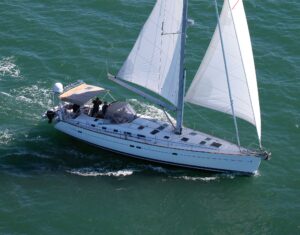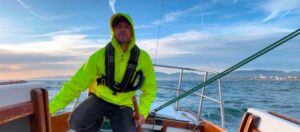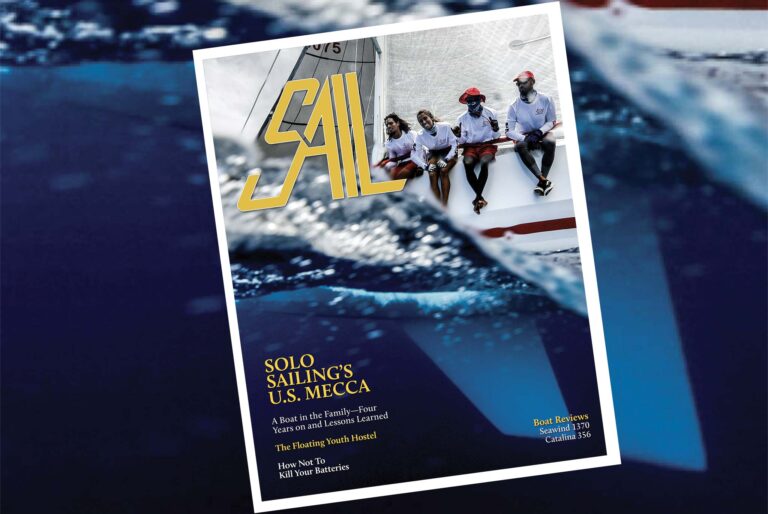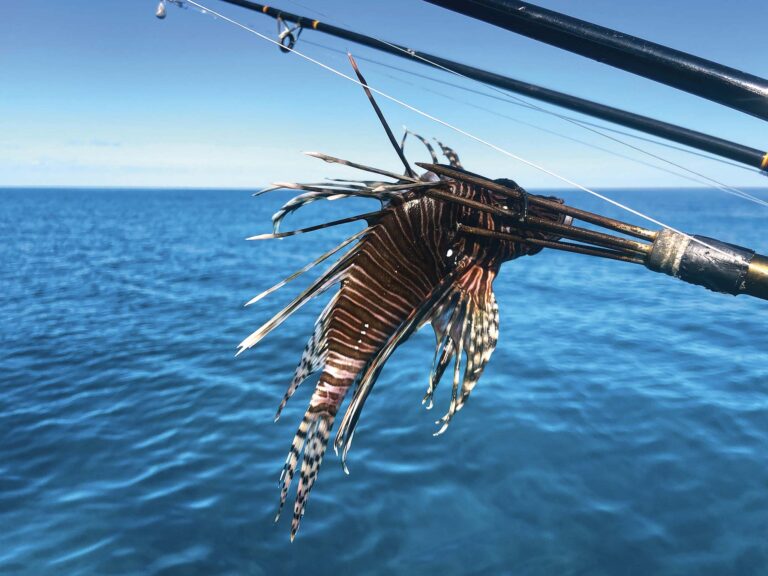On the second-to-last offshore leg of our trip to Sweden in our 35-foot yawl, Arcturus, we were sailing up the Baltic toward the big island of Gotland and its medieval city Visby. The barometer began dropping after we left Malmö, and 20 miles from Visby the wind started to freshen. We made hull speed for the first time in three days, sailing fast beneath a darkening sky in the west. It drizzled as we sailed through the breakwater.
Most guest docks in Sweden consist of one main floating pontoon, with mooring balls set at intervals alongside to which visiting boats can tie lines and moor bow- or stern-to. Since there were no others boats on the pontoon at Visby, we simply tied up alongside it. But as the wind increased, it brought with it a very annoying swell that drove Arcturus up against the pontoon and smashed our poor fenders flat. Next thing we knew, we were pinned.
A Lost Art & Its Uses
The Royal Navy’s seamanship manual from 1904 describes kedging as a means for maneuvering large engineless ships in and out of tight harbors and tidal river entrances. Strapping young lads would take to the longboats and row out one of the ship’s smaller anchors in the direction they wanted to move the ship. They would then drop anchor when they ran out of cable, return to the ship and take up on the capstan to pull the ship up to the anchor, usually 600 feet or so at a time. It was a slow, hard process, but then again it was the only option, and they made it work.
In theory, kedging is simple. In reality, there are a number of things that can make it a challenge. Kedging is an art that requires practice. If you ever need to do it someday to save your boat, you will be glad to have rehearsed. A combination of patience and smooth actions is the key.
Kedging works best with a long line. Unlike anchoring, it is scope rather than the weight of the ground tackle that provides the holding power. Those rowing out a kedging rode in a hard dinghy often have an easier time of it. Inflatable dinghies with outboard motors take longer to launch if they are stowed deflated, and long lines and propellers are a bad mix—especially if you are in a hurry and are trying to drive the dinghy with one hand while paying out line with the other.
If an inflatable with an outboard is all you have, make it easier on yourself by loading the anchor in the center of the dinghy and then take in the rode over the bow. Be sure to flake the line down instead of coiling it, so that it will run smoothly as you haul the anchor away from the mother ship. When everything is ready, drive the outboard in reverse and let the line pay out from the bow. You may get wet, but this will keep the line away from the prop and also makes it easier to control the dinghy in a crosswind.
A kedge by definition is a light anchor. The smaller the kedge the more manageable it will be in a dinghy, so you need to strike a balance between holding power and ease of handling. A modern Danforth or Fortress anchor generally works best, perhaps a size or two smaller than what you might use as your main anchor, or bower.
If you are hard aground and are trying to kedge off, attach the end of your kedge rode to a halyard and use it to heel the boat and reduce its draft. You may need a second kedge to winch yourself out of the mud, but the leverage from the masthead will heel the boat over far more than the standard practice of putting crew outboard on the boom.
In a real pinch, if the wind and chop are too much for even the stoutest dinghy, don’t be afraid to take to the water. Buoy the anchor with a bunch of fenders, put on a lifejacket, don your mask, fins and snorkel, and swim the anchor out against the elements.
Pinned to the Dock
In Visby, we were stuck, but not on the bottom. Overnight the jerky motion of the boat had nearly chafed through a spring line, and the boat’s rubrail had chewed a groove in the wooden beam on the outside of the pontoon. We awoke after a fitful night’s sleep to find splinters on the side decks and were lucky the boat was undamaged.
We initially thought we would try and warp Arcturus around to the leeward side of the pontoon, nudging her off the end and letting the wind bring the stern round. But the wind and swell were strong enough that we were afraid we might lose control of the boat and cause more damage than if we’d done nothing at all. The floating pontoon was also moving, occasionally snapping the lines taut and putting one heck of a shock load on the cleats. Because this would have been markedly worse on the leeward side, I decided what we really needed was a breast line to hold us off the dock to windward.
We could have set an anchor to do this, but with mooring balls all around, we decided to use one of them instead. First we took two of our longest lines and led them, one from the bow and one from the stern, through an eye in the mooring ball and then back to the boat. Normally when kedging off of a shoal, it does not much matter which direction you go, so long as it is generally the right one. But kedging off a dock, you may want more control to keep the boat centered. In Visby we set up a bridle with two lines, which allowed us to keep the boat parallel to the dock while pulling it off. Laying out a breast line with a kedge, you could easily create a bridle by bending a second line to the kedge rode with a rolling hitch.
When we hauled our breast lines tight, the strain was strong enough to sink the mooring ball we’d led them to, but it opened up a much-needed gap. It also relieved our fenders and protected Arcturus from the dock. We still rocked and rolled in the swell, but not onto the dock. By doubling the breast lines and fixing both ends on the boat, it was also a simple matter to slip the lines from the boat when it came time to leave.
View the video: How to Set a Kedge Anchor http://www.sailmagazine.com/cruising-tips/how-set-kedge-anchor









